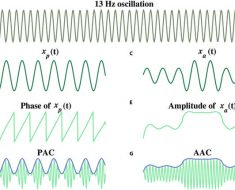
- Cannabis use is on the rise in the United States and other areas of the world.
- Researchers from Washington University in St. Louis found children exposed to cannabis while in the womb show increased symptoms of psychopathology such as depression and anxiety in early adolescence.
- Elevated psychopathology symptoms during adolescence can make a young person more vulnerable to developing psychiatric illness and substance misuse.
Recent research shows that recreational cannabis use is on the rise in the United States. And the United Nations Office on Drugs and Crime World Drug Report 2020 states that cannabis was the most used substance worldwide in 2018.
Although cannabis is sometimes prescribed for medical use, there are risks associated with its use, including impaired judgment and memory loss. Some past research also linked cannabis use to mental health issues such as anxiety and depression.
A research team from Washington University in St. Louis, MO, has found evidence suggesting that children exposed to cannabis while in the womb show increased symptoms of psychopathology — including anxiety and depression — as the children become adolescents at ages 11 and 12.
The study appears in the journal JAMA Pediatrics.
How does cannabis affect pregnancy?
Research surrounding the percentage of pregnant people using cannabis is mixed.
One study published last year showed that cannabis use among pregnant people in the U.S. increased from about 6.8% to 8.1% during the COVID-19 pandemic.
However, other research indicates this percentage may be larger, as not all pregnant people report cannabis use to their doctor. For instance, a 2015 study found that treatment admissions for substance misuse increased from 29% to 43% for pregnant people using cannabis during their pregnancy.
And a study published in 2017 found that 14.6% of pregnant teenagers ages 12 to 17 in the U.S. reported using cannabis while pregnant, based on data from 2002-2012.
A common reason a pregnant person might use cannabis during pregnancy is to help alleviate “morning sickness” symptoms such as nausea and vomiting, anxiety, stress, and pain.
However, research shows using cannabis during pregnancy can have adverse effects on a fetus, including:
- low birth weight
- stunted fetal growth
- birth before 37 weeks gestation
- increased risk of stillbirth
Additionally, a new parent can affect their baby while nursing if they use cannabis. This older study from 1990 shows that cannabis exposure during breastfeeding can decrease a baby’s motor development at 1 year of age.
Impact of prenatal cannabis exposure on adolescents
According to lead study author David Baranger, a postdoctoral scholar at Washington University, the new research builds on a prior study the research team had conducted in 2020. The study associated prenatal cannabis exposure with worsening mental health outcomes in children ages 9-10, such as:
- sleeping issues
- depression
- anxiety
- problems with impulsivity
- difficulty paying attention
That study featured data on almost 12,000 children from the Adolescent Brain and Cognitive Development Study (ABCD Study).
“In this study, we followed up with this same group of children, who are now as old as 12, to ask whether anything has changed,” Baranger explained to MNT.
“Have they improved, or gotten worse? To our surprise, we found that children with prenatal cannabis exposure still had worse mental health outcomes — things had not gotten better, nor had they gotten worse.”
Baranger said the new study suggests that elevated rates of psychopathology symptoms persist from ages 9 to 12. These symptoms include depression, anxiety, and other psychiatric conditions.
“Early adolescence is a period with increased onset of mental health disorders. That these children have a greater mental health burden at this age suggests that they may be at risk for the onset of mental health disorders in adolescence.”
– David Baranger, lead author of the new study
Why is adolescence significant?
MNT also spoke with psychiatrist Dr. Anish R. Dube, chair of the American Psychiatric Association’s Council on Children, Adolescents and their Families, about the findings of this study and the significance of elevated rates of psychopathology symptoms as the children in the study transition from childhood to adolescence.
“Adolescence is a developmental period of both vulnerability and opportunity in a young person’s life,” Dr. Dube explained.
“While normal emotions may be experienced more intensely in young people and they may be prone to experimentation and activities that provide immediate gratification, with a nurturing environment and developmentally appropriate support from their families and peers, they will mostly grow into healthy, well-adjusted individuals.”
“However, elevated rates of psychopathology symptoms persisting as young people transition from childhood to adolescence leave them more vulnerable to not meeting societal expectations, experiencing greater inter and intra-personal difficulties navigating these years, and ultimately may also lead to an increased risk of psychiatric illness and substance use.”
– Dr. Anish R. Dube
Dr. Dube added that practitioners treating children exposed to cannabis while in the womb and who show symptoms of psychopathology may need to consider additional screening and closer follow-up of these young people for the persistence of symptoms or conversion to psychiatric illness.
“They may be more vulnerable to substance use and should be assessed accordingly and regularly,” he said.
Next steps in the research
Beyond continuing to follow this group of children as they age and develop, researchers are beginning studies to more closely study the effects of substance use on prenatal and infant development, said research team member Ryan Bogdan, Ph.D., associate professor of psychological and brain sciences and director of the BRAIN Lab at Washington University in St. Louis.
“We are currently conducting a study that is recruiting pregnant women and assessing children shortly after birth so that we may understand neonatal associations with prenatal cannabis exposure,” Dr. Bogdan said.
“We are also part of a large national study, the HEALthy Brain and Child Development (HBCD) Study, that plans to recruit approximately 7,500 pregnant women across 30 sites within the United States to better understand how all kinds of prenatal exposures, genetic factors, and early experiences may shape early development, health, and behavior in early childhood. These studies will be important to assess the effects of prenatal exposures and other factors on early child development and health,” he added.
Dr. Dube noted that he would like to see the next steps for this research to consider identifying factors associated with better outcomes despite prenatal cannabis exposure.
For example, mitigating circumstances such as specific interventions may lessen the likelihood of psychopathology symptoms. And then consider interventions early in a woman’s pregnancy that may help with cannabis use cessation.
“Further examining brain-based changes in young people entering adolescence with psychopathology symptoms and with prenatal cannabis exposure may also help explain the mechanism by which cannabis affects the developing brain and offer possible treatments,” he added.
Source: Read Full Article





